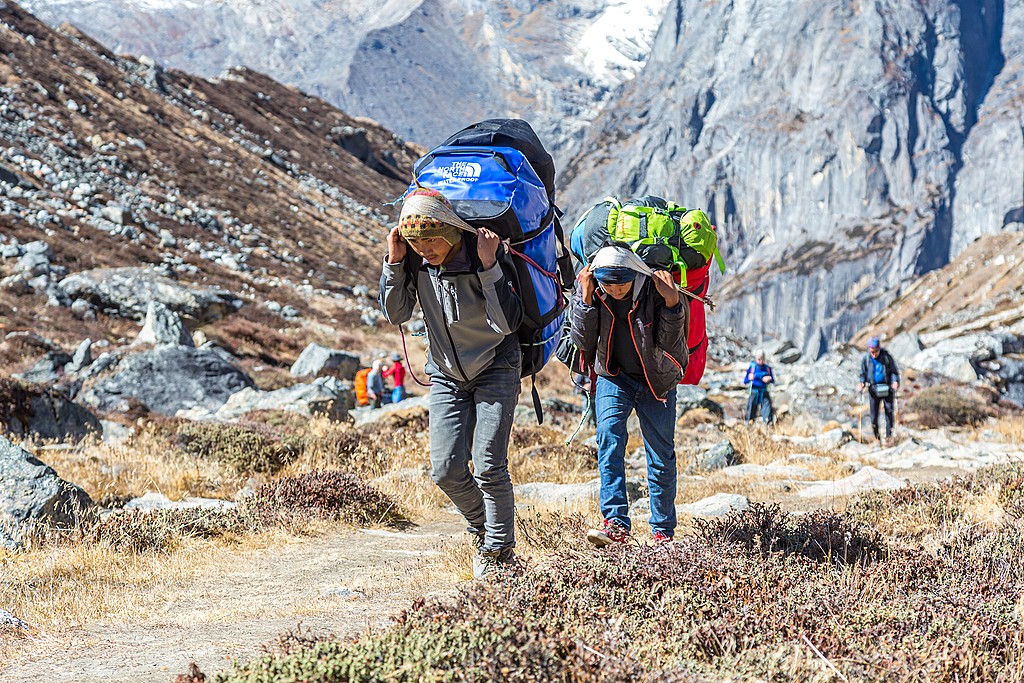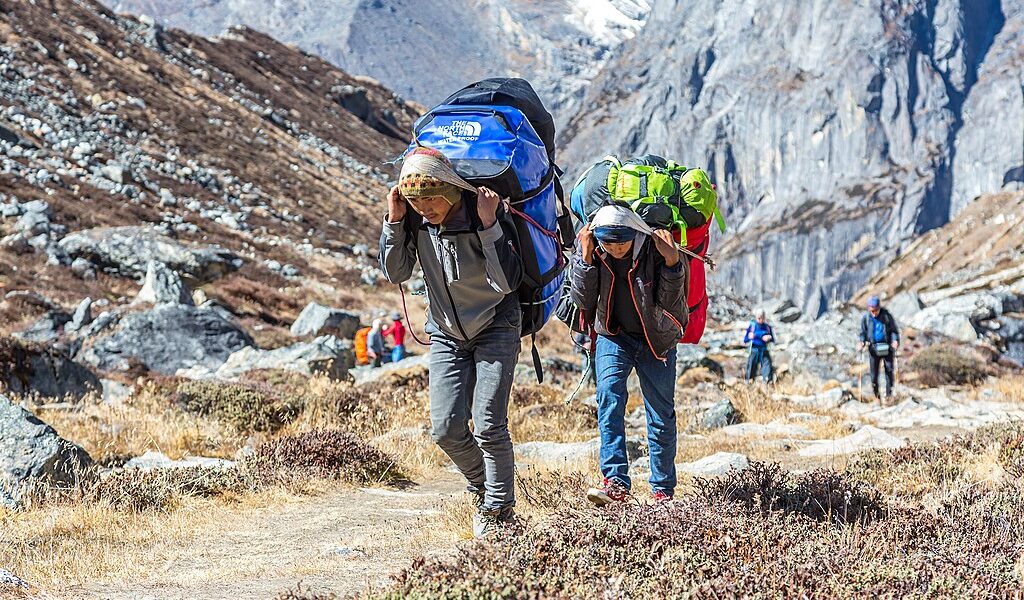
How much should you tip your guide and porter after a trek? That depends on a variety of factors: whether you’re traveling alone or with a group, for just one week or a whole month, and most importantly, what kind of service you received. Here’s a brief article to help you.
Understanding Tipping Etiquette in Nepal
When embarking on guided tours or challenging treks in the breathtaking landscapes of Nepal, the subject of tipping often arises. It’s important to understand that there isn’t a rigidly fixed tipping rate. However, tipping is a customary practice that is generally expected when the service provided warrants it. A tip serves as a tangible expression of your gratitude for the hard work and dedication of the guides and porters who accompany you on your journey. These individuals play a crucial role, often ushering you and your belongings safely across formidable mountain passes and acting as your primary support system – and perhaps even your source of amusement and camaraderie – in remote and isolated areas. Remember that your guides and porters are instrumental in ensuring that your experience in Nepal becomes a truly unforgettable one.
Determining the Appropriate Tip Amount
Ideally, the amount you tip should reflect your assessment of the quality of service provided by your guides and porters. It should be given only if you genuinely believe that they have gone above and beyond to meet your needs and expectations. However, in reality, many trekkers find themselves unsure about the appropriate amount to give. They may worry about being perceived as stingy if they tip too little or excessive if they tip too much. To alleviate this uncertainty and provide some clarity, we have outlined some reasonable guidelines below to help you determine a suitable tip amount.
| Service | USD per day | Rupees per day |
|---|---|---|
| Trekking Guide | $10 to $15 USD | 1000-1500 NPR |
| Porter | $5 to $10 USD | 500-1000 NPR |
| Tour Guide | $10 to $15 USD | 1000-1500 NPR |
| Driver | $5 to $10 USD | 500-1000 NPR |
Please note: It’s important to remember that the amounts listed above represent the collective tip given by your group as a whole, rather than individual contributions from each member.
The suggested figures assume that you have chosen to trek with a reputable and responsible company that prioritizes the well-being of its staff and porters. This includes providing them with fair and sustainable living wages and ensuring that they have adequate insurance coverage. If, however, you have booked a particularly budget-friendly trek or are hiring a porter or guide for a rate significantly lower than the standard daily rate, you should strongly consider increasing your tip amount. In such cases, your tips may be a vital source of income for the guide and porter, helping them to support themselves and their families. Conversely, if you receive exceptionally outstanding service that exceeds your expectations, feel free to reward them with a more generous tip. On the other hand, if the service is subpar or fails to meet your needs, it is acceptable to provide a lower tip.
Furthermore, the length of your trek can also influence the appropriate tipping rate. For shorter treks lasting a week or two, you can generally adhere to the guidelines mentioned above. However, if you are embarking on a more extended expedition, such as a month-long trek, a total tip of $200-$250 USD may be sufficient. For solo travelers, it is generally acceptable to lean towards the lower end of the suggested tipping range.
Finally, it is worth noting that guides in Nepal do not all receive the same level of compensation. Guides with specialized skills, such as fluency in a particular language, extensive experience in the field, or international certifications in wilderness survival, are often able to command higher daily rates, sometimes reaching $50-$100 USD. In these instances, you might consider offering a larger tip, perhaps around 15% of their total earnings for the duration of your trek, as a gesture of appreciation for their expertise and dedication.
Currency Considerations for Tipping
When it comes to tipping, you have the flexibility to use either Nepali Rupees (NPR) or US Dollars. A convenient way to obtain Nepali Rupees is by withdrawing them from ATMs located in the cities of Kathmandu or Pokhara. However, it’s important to be aware that ATMs in Nepal can sometimes be unreliable. You may need to try several different machines before finding one that is functioning properly and dispensing cash. Alternatively, you can exchange cash or traveler’s checks at a local bank to acquire Nepali Rupees.
The Optimal Time for Tipping
The customary time to present tips is on the final evening of your trek, typically after dinner. If you are traveling as part of a group, it is recommended that all members contribute to a collective fund to be presented to the entire team of guides and porters. In addition to this group tip, each trekker may also choose to give a small, individual tip to their own porter and/or guide, particularly if they have formed a special bond or connection during the trek.
When in Doubt, Trust Your Instincts
While the guidelines provided offer a helpful starting point, it’s essential to remember that they are not rigid rules that must be followed precisely. Feel free to deviate from them based on your personal experiences and observations. For instance, if you find yourself connecting more deeply with your porter than with your guide, or if your porter consistently goes the extra mile by carrying your kit bag and providing assistance over challenging terrain, then you should not hesitate to adjust your tip accordingly. The most important aspect of tipping is to reward your guides and porters based on the quality of their service, their dedication to their work, and your overall individual experience throughout the trek. Don’t be afraid to trust your instincts and let your appreciation guide your generosity.
If you have any further questions or concerns regarding tipping practices in Nepal, it is always a good idea to consult with your travel specialist before your trip. After all, you’ll want to ensure that you have an adequate amount of cash on hand – not only for tipping purposes but also to treat yourself to a well-deserved beer at the end of your incredible trek, perhaps in a local establishment in Kathmandu or after reaching your destination near Pokhara!
B-1770

